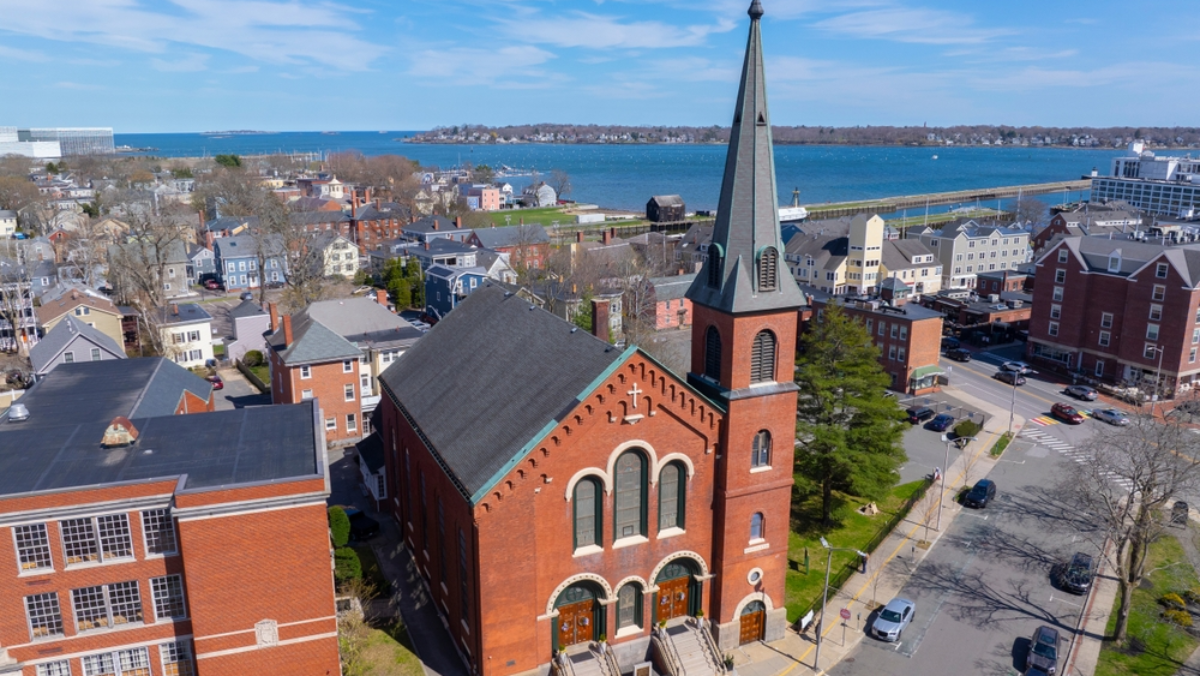Massachusetts is home to some of the oldest and most beautifully preserved towns in America. Walking through their cobblestone streets and past centuries-old buildings, you can almost hear the echoes of colonial life and revolutionary history.
These charming destinations offer more than just pretty scenery—they let you experience what life was like hundreds of years ago, making history come alive in the most magical way.
1. Salem
Famous worldwide for the 1692 witch trials, Salem carries an unmistakable colonial atmosphere that draws you into early American history. The town’s narrow lanes are lined with weathered wooden homes that have stood for over three centuries, their dark shutters and peaked roofs telling silent stories of the past.
Walking through the old burial grounds, you can read gravestones from the 1600s, their inscriptions worn but still legible. The preserved architecture and careful historical restoration make Salem feel frozen in time.
Whether you visit during the spooky Halloween season or quieter months, Salem’s authentic colonial charm never fades.
2. Concord
Step onto Concord’s historic grounds and you’re instantly transported to April 19, 1775, when the Revolutionary War began. The Battle Green remains much as it was that fateful morning, with monuments marking where Minute Men faced British soldiers in the fight for American independence.
Old taverns that once served weary colonial travelers still operate today, their creaking floors and low-beamed ceilings authentic reminders of another era. The town meticulously preserves its 18th-century character through strict building codes and historical societies.
You can walk the same paths Paul Revere rode, visit homes of literary giants like Emerson and Thoreau, and explore battlefields where history changed forever.
3. Plymouth
As America’s hometown, Plymouth holds a special place in the nation’s heart and history books. This is where the Pilgrims landed in 1620, seeking religious freedom and a new beginning in an unknown land. Today, you can board a full-scale Mayflower replica and imagine the harrowing 66-day Atlantic crossing those brave settlers endured.
Plimoth Patuxet brings the 17th century to life with costumed interpreters who speak, work, and cook exactly as the Pilgrims and Wampanoag people did. The waterfront village maintains its historic character beautifully, with period architecture and museums dedicated to preserving this crucial chapter of American history.
Plymouth Rock itself remains a powerful symbol of courage and new beginnings.
4. Marblehead
Marblehead’s winding streets seem designed to confuse modern GPS systems, but that’s part of its authentic 17th-century charm. The roads follow the same irregular patterns laid out nearly 400 years ago, when town planning meant following natural land contours rather than creating neat grids.
Weathered clapboard houses crowd together along these narrow lanes, many dating back to the 1600s and 1700s. The harbor remains active with sailboats and fishing vessels, maintaining Marblehead’s maritime heritage that made it wealthy during colonial times.
Photographers adore this town because every corner looks like a postcard from early New England—because it essentially is.
5. Nantucket
Nantucket takes historic preservation so seriously that the entire island operates under strict architectural guidelines, ensuring nothing disrupts its 19th-century character. Gray-shingled cottages line cobblestone streets that have survived since the whaling boom made Nantucket one of America’s wealthiest towns in the 1800s.
Lighthouses stand sentinel along the coastline, guiding ships just as they did when whale oil lit the world’s lamps. The downtown area looks remarkably similar to photographs from 150 years ago, with brick sidewalks, antique storefronts, and gas-style street lamps creating an atmospheric time warp.
Arriving by ferry enhances the feeling of traveling backward through time, as modern mainland life fades away with each nautical mile crossed.
6. Rockport
Rockport’s iconic red fishing shack, known as Motif No. 1, has been painted and photographed more than perhaps any other building in America. This tiny structure perfectly captures the town’s fishing heritage and artistic soul, symbolizing a simpler coastal life that persists despite modern changes.
Artists have flocked to Rockport for over a century, drawn by the perfect light, rocky coastline, and authentic New England character. Historic fishing shacks converted to galleries and studios line the harbor, while narrow streets wind past homes that have weathered Atlantic storms for generations.
The town feels like a storybook illustration brought to life, where fishing boats still bob in the harbor and seagulls cry overhead just as they always have.
7. Deerfield
Old Deerfield Village represents one of America’s most authentic colonial neighborhoods, with original 18th-century homes lining a mile-long main street that looks virtually unchanged since Revolutionary times. Unlike many historic sites that recreate the past, Deerfield preserved the real thing—actual buildings where colonial families lived, worked, and survived frontier hardships.
Living-history museums throughout the village demonstrate colonial crafts, cooking methods, and daily routines using period-accurate tools and techniques. The homes contain remarkable collections of original furniture, textiles, and household items that survived centuries of use.
Walking this street feels like entering a time portal, especially during quiet moments when modern intrusions fade away.
8. Lexington
Lexington Battle Green witnessed the first shots of the Revolutionary War on April 19, 1775, forever earning its title as the birthplace of American liberty. Standing on this hallowed ground, you can almost hear the drum rolls and shouted commands that preceded the battle changing world history.
The town surrounds this historic green with beautifully preserved colonial buildings, including Buckman Tavern, where Minute Men gathered before the battle. Monuments and markers explain exactly where events unfolded that momentous morning.
Lexington doesn’t let visitors forget that regular people—farmers, shopkeepers, fathers—risked everything here for the freedom we now take for granted. Their courage echoes through every carefully preserved building.








